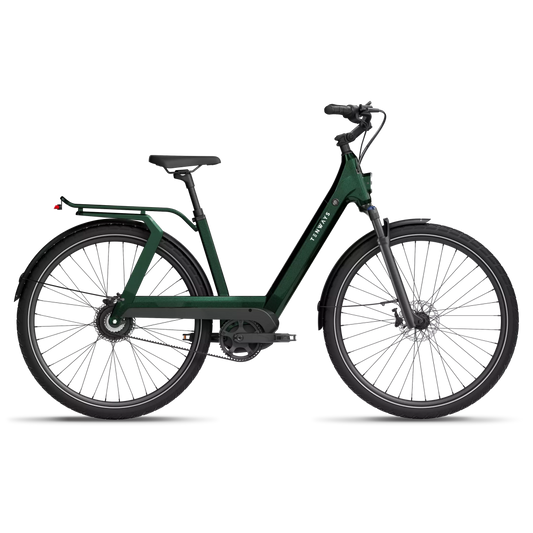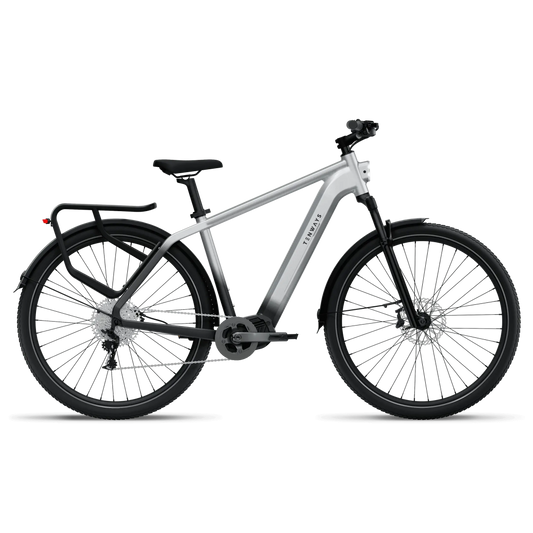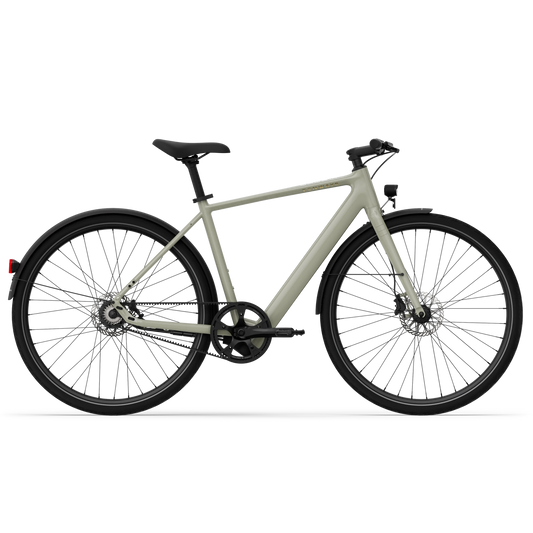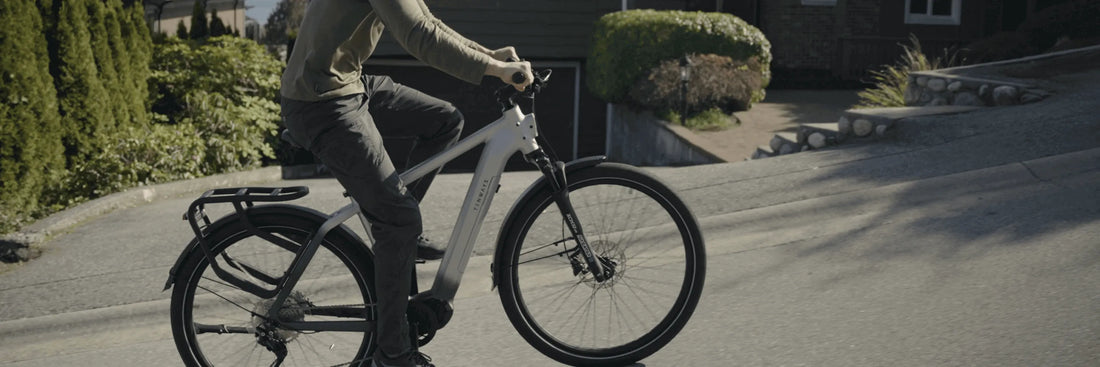All e-bikes have a motor that plays a key role in performance, controlling how power is transferred to the rider as they pedal. Electric bikes have either a mid-drive motor or a hub motor. the main difference is their positioning, which could affect your riding preferences. So, choosing an e-bike with the right motor for you is an important consideration when buying your new ride.
In this blog, we'll explain the uniqueness, advantages, and disadvantages of these motors and how they compare in key riding aspects to help find your best fit!

Mid-drive motors
A mid-drive motor is centrally located in the frame, near the bottom bracket or crank area of the e-bike and delivers power directly to the chain or belt, and then to the rear wheel for propulsion.

Pros
- Their positioning enables efficient power delivery through the e-bike's gears, and they typically use torque sensors, both of which factors feel complementary to the rider's pedaling efforts for a natural and consistent riding experience.
- Mid-drive motors tend to offer higher torque, which makes them especially useful for climbing varied terrain such as steeper hills and rough trails.
- They balance weight distribution and provide a low center of gravity, which allows for easier pedaling and control in tougher riding environments.
Cons
- E-bikes with a mid-drive motor tend to be more expensive because the motor's central placement requires manufacturers to integrate it into the bike's mechanics, often requiring frame modifications.
- Its centralized weight and higher-torque system can also put more stress on the frame, which may reduce its lifespan.
- Maintenance can be more complicated and expensive due to its complex design and close relationship with the chain and gears.
Hub motors
Integrated into either the front or rear wheel hub, a hub motor delivers power directly from the wheel.

Pros
- Because of its placement on an e-bike, this motor has a simpler, more durable design that’s easier to access and less expensive to maintain with fewer moving parts.
- They are discreet and provide smooth power delivery on flat terrain, making them great for effortless urban commuting.
Cons
- Their off-center position can also be a hindrance, potentially affecting the bike's balance, which can influence handling and control on more rugged terrain.
- They provide consistent power, but their placement can make riders feel "pushed" or "pulled".
- Hub motors typically use cadence sensors which relate to speed of the crank’s rotation, so relying on the rider to start pedaling before the motor engages, which can make the riding experience feel less natural. In contrast, at TENWAYS our hub motor models use torque sensors for a more intuitive feel.
Comparison of both motors

Riding experience
A mid-motor tends to offer a more natural riding experience, while a hub motor may feel more like you are being pulled along but offers a more discreet ride.
Price
Mid-drive motor e-bikes tend to be more expensive than hub motor e-bikes because they’re more difficult for manufacturers to configure into designs. Hub motor e-bikes tend to have a simpler design and are therefore cheaper.
Maintenance cost
Mid-drive motor e-bikes are more expensive and complex to maintain, and their lifetime can be affected by stress placed on the frame. The straightforward design of hub motors makes them easier and cheaper to maintain with a longer lifespan.
Motor size and weight
Mid-mounted motors tend to be stronger but heavier than a hub motor, which is typically smaller and lighter.
Riding conditions
The hub motor is built for easier riding conditions, such as flat city streets, with a design that is less suitable for performance in more challenging terrain; the mid-drive motor is more suitable for uphill riding with tougher control and stability.
Range
Normally, mid-drive motors have a longer range because they use the gearing to distribute power, using energy more efficiently, resulting in higher range capabilities. The range of hub motors tends to be more limited because of their closeness to the wheel, which can cause energy loss through friction.
Which motor is better?
There’s no clear-cut answer, it depends on how you plan to include e-biking in your lifestyle. The centralized positioning of mid-drive motors is hugely advantageous in providing a more natural riding experience and tackling challenging terrain, but they’re more expensive and harder to maintain than hub motors. Meanwhile, hub motors have a low-maintenance, lightweight design that’s more suited to smooth and discreet riding on urban roads.
Final words
We hope this guide has helped you decide which type of e-bike motor is best for you! At TENWAYS we understand that both motor types have a variety of benefits, so we’ve made sure our electric bikes include the best of both worlds. We've optimized the advantages and reduced the drawbacks of both motor types to create outstanding, low-maintenance urban e-bike with powerful performance.











